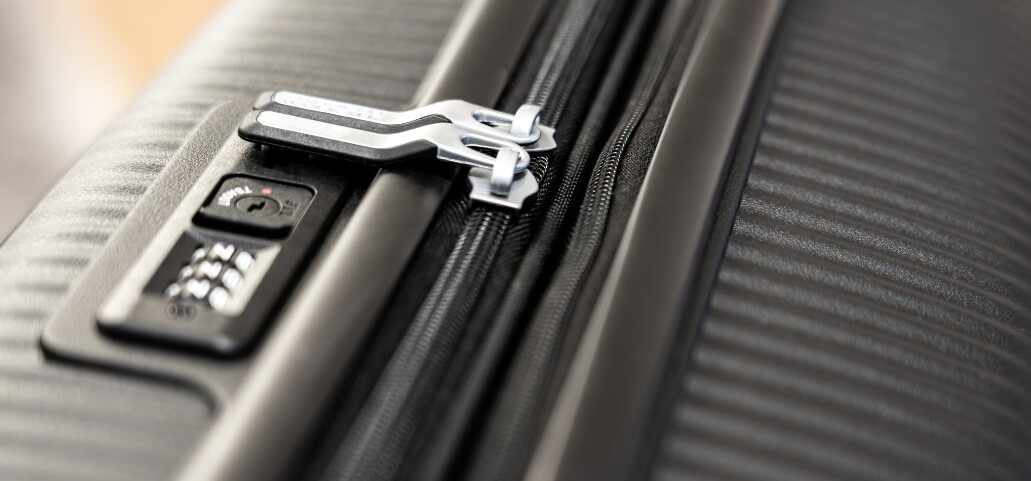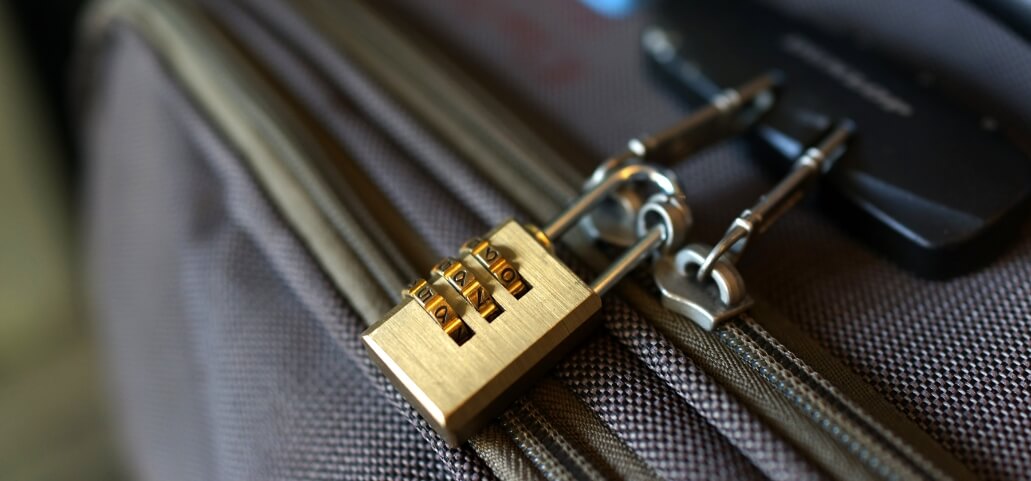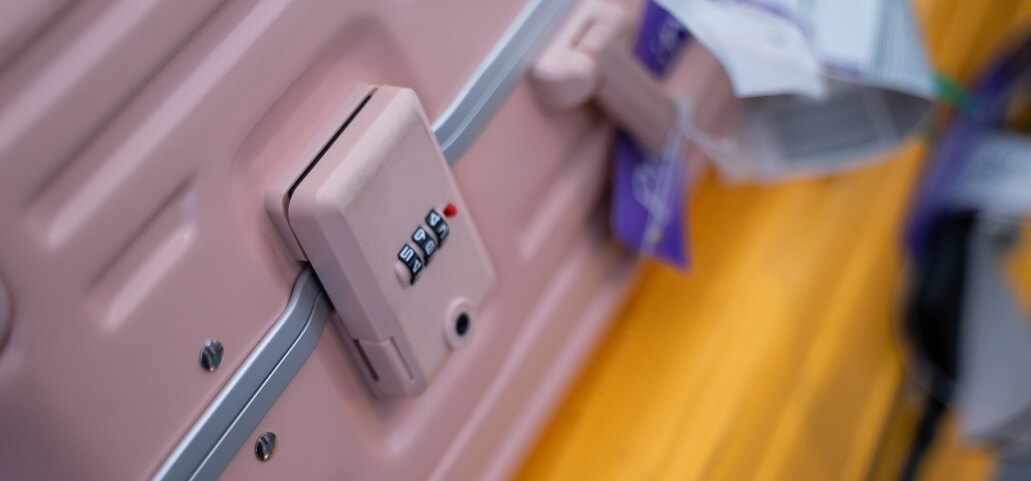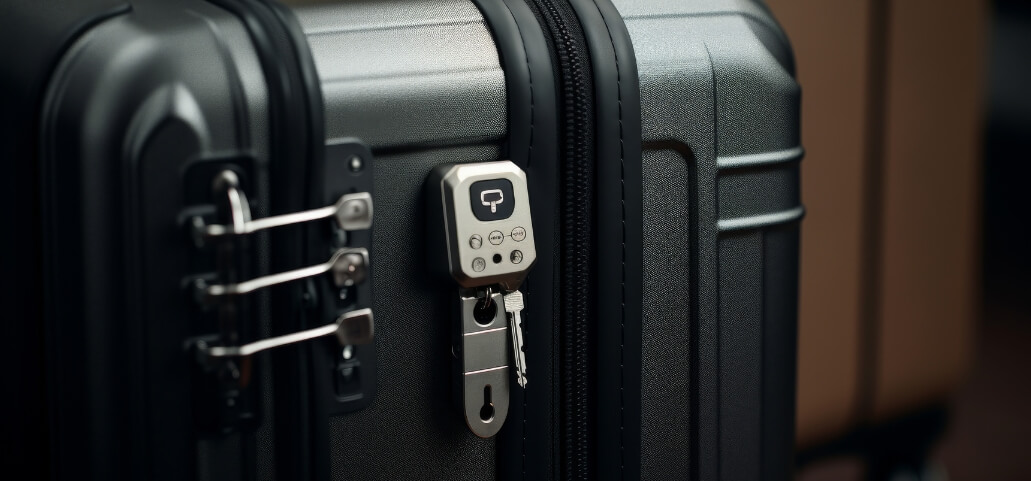Knowing how to set locks on samsonite luggage to ensure your belongings are secure is paramount. Samsonite luggage is renowned for its durability and security features, with their locks being a significant part of this reputation. Setting the locks on your Samsonite luggage is crucial for both security during travel and compliance with TSA regulations. This comprehensive guide will walk you through the various types of locks available on Samsonite luggage and provide step-by-step instructions on setting and maintaining these locks. So let’s dive in and explore how to set locks on samsonite luggage.
Section 1: Understanding How to Set Locks on Samsonite Luggage
Types of Locks:
Samsonite luggage comes equipped with different types of locks to cater to various security needs and preferences. Here’s a brief overview:
- Combination Locks: These locks require a specific series of numbers to unlock. They are popular for their benefit , as you don’t have to brood about losing a key.
- Key Locks: To unlock these locks, a physical key is required. They offer a traditional sense of security, but you need to keep track of the key.
- TSA-Approved Locks: TSA agents have access to a master key that opens these locks. When visiting the US, where TSA inspections are required, they are indispensable.
Importance of Setting Locks:
Setting locks on your Samsonite luggage offers two main benefits:
- Security Benefits: Locks that are properly adjusted prevent theft and unwanted entry, protecting your possessions.
- TSA Compliance: TSA-approved locks guarantee your bag stays safe during your trip by enabling TSA inspectors to examine your belongings without having to break the lock.
Section 2: Preparing to Set Your Samsonite Lock

Gather Necessary Information:
Before you start setting your lock, you need to gather some essential information:
- Locating the Lock: Identify the type of lock your Samsonite luggage uses.
- Finding the Default Combination: Most combination locks come with a factory-set default combination (usually 0-0-0).
Tools You Might Need:
The tools listed below may be required, depending on the type of lock:
- Small Tools for Resetting: A small tool like a paperclip might be needed for resetting some combination locks.
- Pen and Paper: Use these to note down your new combination, ensuring you don’t forget it.
Section 3: Setting a Combination Lock

Finding the Default Combination:
- Where to Find the Default Code: The default combination is usually set to 0-0-0. Check your lock’s manual or the Samsonite website for specifics.
- Importance of Knowing the Default Combination: Knowing the default combination is crucial as it is the starting point for setting your personalized code.
Resetting the Combination:
Follow these steps to reset your combination lock:
- Open the Lock: Set the dials to the current combination (or the default combination if it hasn’t been changed).
- Press the Reset Button: Usually found on the side of the lock is this button. Use a small tool if necessary.
- Set Your New Combination: Turn the dials to your desired combination.
- Release the Reset Button: This is your new combination.
Tips for Choosing a New Combination:
- Make your combination simple to remember, yet challenging for outsiders to decipher.
- Avoid using obvious combinations like 1-2-3 or 0-0-0.
Troubleshooting Common Issues
- Forgotten Combination: If you forget your combination, you may need to contact Samsonite customer service for assistance.
- Lock is Stuck: Make sure the dials are positioned correctly. If the lock is still stuck, consult the manual or contact Samsonite support.
Section 4: Setting a Key Lock

Understanding Your Key Lock:
Simple and tactile, key locks offer a sense of security. They come with a set of keys that must be used to lock and unlock. Unlike digital or combination locks, key locks offer a simple and reliable mechanism that has been trusted for centuries.
Inserting and Turning the Key:
Follow these steps to use a key lock:
- Insert the Key: Insert the key into the opening. Make sure the key is fully inserted to ensure smooth operation.
- Turn the Key: To lock or unlock, turn the key in a clockwise or counterclockwise direction. You might hear a click, indicating that the locking mechanism has engaged or disengaged.
Keeping Your Keys Safe:
- Tips for Not Losing the Key: Always keep a spare key in a separate location from the main key. Consider attaching your keys to a keychain or lanyard for ease of access and visibility. It’s also a good idea to have a designated spot for your keys at home to minimize the risk of misplacement.
- What to Do if You Lose the Key: Do not panic if you misplace the key. Contact Samsonite customer service to order a replacement key. For verification, they most likely need to know a little bit about your lock. Alternatively, you can seek a professional locksmith who can help you unlock and possibly provide a replacement key.
Section 5: TSA-Approved Locks
Benefits of TSA-Approved Locks:
TSA-approved locks offer several advantages:
- TSA Accessibility: TSA agents can open these locks using a master key, preventing damage to your luggage. This eliminates the possibility of forced entry and guarantees that your possessions remain secure and undamaged during security examinations.
- Security Features: These locks combine the benefits of combination and key locks while ensuring compliance with TSA regulations. They offer a reliable security solution for travelers, giving peace of mind that their luggage is protected from unauthorized access.
Setting a TSA Lock:
Follow these steps to set a TSA combination lock:
- Find the Default Combination: Usually set to 0-0-0. Since this default code is common for many locks, getting setup is simple.
- Open the Lock: Turn the dials to the default combination. Once aligned, the lock should easily open.
- Press the Reset Button: A paperclip or pin might be a good tiny instrument to use to press the reset tab. This button is typically located on the bottom or side of the lock.
- Set Your New Combination: Turn the dials to choose the code that you want. Make your combination simple to remember, yet challenging for outsiders to decipher.
- Release the Reset Button: This is your new TSA combination. Ensure that the dials are securely in place before locking your luggage.
How to Use the TSA Keyhole:
- TSA agents can access your lock using a master key that fits into the TSA keyhole, which doesn’t compromise your security. This keyhole is specifically designed for TSA use, ensuring that the lock can be opened and relocked by authorized personnel only. This function complies with airport security regulations while preserving the integrity of your lock.
Section 6: Maintaining Your Luggage Locks

Regular Checks:
Regularly checking your luggage locks ensures they function correctly and remain secure, providing peace of mind during your travels.
- How Often to Check Your Locks: Inspect your locks before and after each trip. Frequent inspections will aid in identifying any possible problems early on.
- Signs of Wear and Tear: Check for apparent damage, stiffness, or corrosion. Pay special attention to any difficulty in turning the key or setting the combination, as these might be early signs of trouble.
Cleaning and Lubricating Locks:
Maintaining your locks properly might help them last longer and function more smoothly.
- Methods for Cleaning: Apply a little cleaning solution on a soft cloth and use it to clean the locks. The locks can be cleaned with a gentle cloth and a little cleaning solution. Use of strong chemicals that can harm the lock’s substance should be avoided.
- Types of Lubricants to Use: Use a silicone- or light oil-based lubricant to maintain the smooth operation of the lock mechanisms. To prevent any potential harm, use lubricants made especially for locks. A small application every few months can work wonders in maintaining the lock’s functionality.
When to Replace Your Locks:
It’s critical to know when to change your locks if you want to keep your valuables safe and maintain security.
- Indicators That a Lock Needs Replacing: Difficulty in opening or closing the lock, visible damage such as cracks or significant wear, or an inability to reset the combination. Frequent issues with the lock mechanism, even after cleaning and lubrication, are also a red flag.
- How to Replace a Lock on Samsonite Luggage: Contact Samsonite customer service for replacement parts or visit an authorized repair center. They can guarantee you get the right parts and offer advice on the precise replacement procedure. If you’re unsure about the replacement process, many repair centers offer services to professionally replace the lock for you.
Conclusion
Setting and maintaining the locks on your Samsonite luggage is essential for ensuring the security of your belongings during travel. By following this guide, you can confidently set and manage your locks, providing peace of mind and compliance with TSA regulations. Remember, a secure journey is a happy journey—so take the necessary steps to protect your luggage today.
Frequently Asked Questions
Q1: How to set locks on samsonite luggage without any issues?
Answer: To properly set your Samsonite lock, adhere to the instructions provided in this article. If you run into any issues, go to the handbook or get in touch with Samsonite customer support.
Q2: What should I do if the lock is damaged?
Answer: If your lock is damaged, consult the Samsonite website for repair options or visit an authorized Samsonite repair center.
Q3: Can TSA open my locked luggage without damaging it?
Answer: Yes, TSA officials can open and relock your luggage without causing damage if you use TSA-approved locks.
Q4: How often should I lubricate my locks?
Answer: Lubricate your locks every few months or before long trips to ensure smooth operation.
Q5: What happens if my Samsonite lock is stuck and won’t open?
Answer: If your lock is stuck, ensure the dials are correctly aligned. If the problem persists, contact Samsonite customer service for further assistance.
Disclaimer: This guide’s content is intended solely for general informative purposes. While we strive to keep our content accurate and up-to-date, we recommend consulting your Samsonite luggage’s manual or contacting Samsonite customer service for specific instructions related to your lock type.
Personal Experience: As a frequent traveler, I’ve used Samsonite luggage for years. I remember the first time I set the combination lock on my Samsonite suitcase—it felt empowering to know that my belongings were secure. Over the years, I’ve learned the importance of regular maintenance and setting easy-to-remember, yet secure combinations. These simple steps have made my travels smoother and more enjoyable.
Why Trust Our Content?
At panoramapens, we pride ourselves on providing accurate, reliable, and up-to-date information. To guarantee that you get the greatest guidance possible, our information is meticulously researched and authored by professionals. We are aware of how crucial security is when traveling, and we want to arm you with the information you need to safeguard your possessions.

